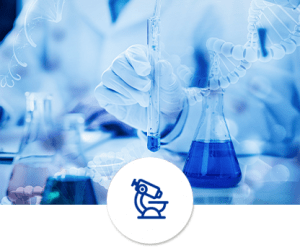isolation and purification of nucleic acids method
Nucleic acid is an important carrier of genetic information and an important biological information molecule. It plays a key role in the process of people’s biological research. At present, there are many methods for isolation and purification of nucleic acids . The most commonly used is (iso)guanidine thiocyanate What is the one-step method of phenol-chloroform, this method is briefly introduced below.
Due to the influence of RNase, in order to obtain a complete RNA molecule, it is necessary to inactivate the activity of intracellular RNase as quickly as possible in the initial stage of nucleic acid isolation and purification. Under the synergistic effect of β-mercapto Z. alcohol, high concentration (iso)guanidine thiocyanate can inhibit the activity of RNase extremely and quickly, and can isolate complete RNA molecules from pancreas and other RNase-rich tissue cells , Has now become a routinely used reagent. For samples with lower content, adding glycogen can increase the recovery rate of RNA. The one-step method is most commonly used in total RNA extraction.
1,(Iso) Guanidine Thiocyanate and Chloroform One Step Method
The (iso)guanidine thiocyanate-phenol chloroform method is a classic one-step method, proposed by Chomczynski and Sacchi in 1987. It lyses the cells with a denaturing solution containing 4mmol/L (iso)guanidine thiocyanate and 0.1mmol/L β-mercaptoethanol, and then extracts the lysis solution with phenol/chloroform under acidic conditions of pH 4.0, and finally RNA is prepared by precipitation with isopropanol and washing with 75% ethanol. Compared with the previous (iso)guanidine thiocyanate-CsCl ultracentrifugation method, this method is simple, economical and efficient, and can handle multiple at the same time. Specimens, and the integrity and purity of RNA are high. It is still used for the isolation and purification of nucleic acids from cultured cells and most animal tissues.
The yield of total RNA depends on the initial amount of the specimen. The yield of total RNA per milligram of tissue is about 4-7 g, and about 5-10 g per 106 cells. However, this method is not suitable for extracting RNA from adipose tissue rich in triglycerides, and sometimes the RNA will be contaminated with polysaccharides and proteoglycans. These contaminations will affect the dissolution of RNA after ethanol precipitation, while inhibiting the RT-PCR reaction. It affects the blotting step in RNA hybridization by binding to the membrane. The extraction of adipose tissue RNA can be replaced by (iso)guanidine thiocyanate-CsC1 ultracentrifugation method. When the pollution of polysaccharides and proteoglycans is serious, the next method can be eliminated by adding an organic solvent extraction step and changing the RNA precipitation conditions.
2,One-step method that can prepare RNA, DNA and protein at the same time
This method is an improved method of (iso)guanidine thiocyanate-phenol chloroform one-step method. It uses (iso)guanidine thiocyanate-phenol single-phase lysis reagent to lyse cells, and then chloroform is added to form two phases. The denatured DNA and protein are located at the interface of the two phases, and the RNA retained in the upper aqueous phase is prepared by isopropanol precipitation and 75% Z alcohol washing in the RNA precipitation solution. The composition of the RNA precipitation solution is 1.2mmol/L NaCl and 0.8mmol/L disodium citrate.
Due to the use of RNA precipitation solution, the RNA samples prepared by this method are rarely contaminated with polysaccharides and proteoglycans, and can be used for mRNA purification, Northern hybridization, reverse transcription and RT-PCR reactions. The DNA and protein at the interface can be precipitated separately by ethanol and isopropanol. The DNA prepared by this method is about 20 kb in size and can be used as a template for PCR reactions, while protein samples are mainly used for western blotting. At present, this method has a variety of commercially available single-phase lysis reagents to choose from. It is the most commonly used method for total RNA extraction, and its yield is equivalent to (iso)guanidine thiocyanate-phenol chloroform one-step method.
3, other methods
Isolation and purification of nucleic acids are numerous, such as LiC1-urea method, (iso)guanidine thiocyanate-CsCl ultracentrifugation method, thermal phenol method, guanidine hydrochloride-organic solvent method, etc., which are now rarely used due to various reasons.
At present, Ascend has formed a professional nucleic acid automatic purification program covering a variety of biological samples.




